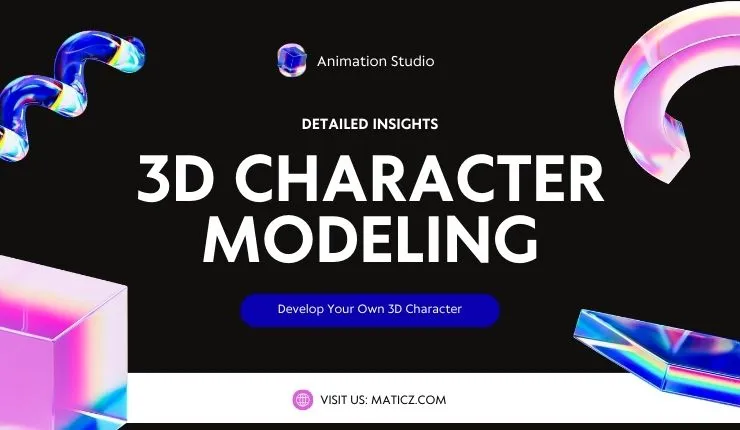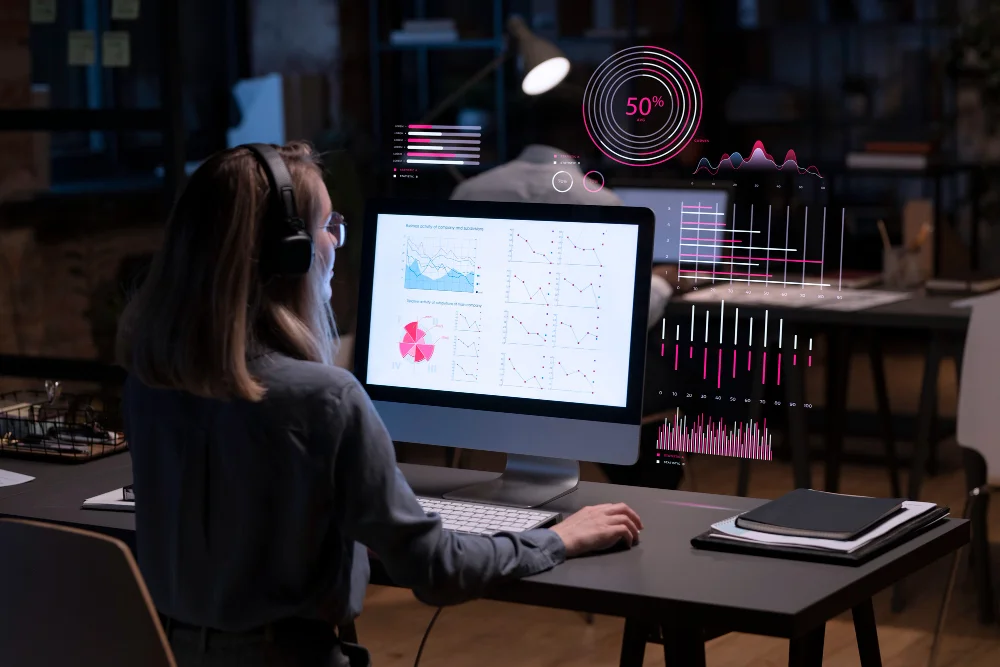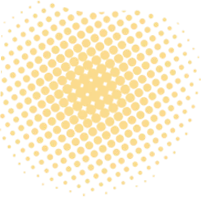Share Posts

3D Character Modeling Guide: How to Make 3D Character Model?
54
3348
103
Overview Of 3D Characters
3D character is a digital representation of fictional or realistic characters that are meticulously crafted in a three-dimensional space. They can be anything from humanoid figures to fantastical creatures. These characters are created across various media such as animated movies, video games, ad campaigns, tutorials, and virtual and mixed reality experiences. It requires a unique blend of artistic vision and technical expertise to craft these 3D characters.
In recent years, 3D modeling has seen exceptional growth and demand. 3D animation technology is gaining value and recognition across various industries. Especially in the fields of gaming, animation, and advertising, it has made it to the need for high-quality 3D characters.
According to reports from Statista, the global 3D animation modeling market would be about $7.3 billion, which is 11% more than the $6.6 billion it was worth the year before. They also expected this amount to keep increasing every year, reaching over $11 billion by 2026. This highlights the sustained momentum in demand for 3D animation services, particularly character modeling.
If you are curious about this innovative concept but don’t know where to start, then you are at the right place. In this blog, we will delve deeper into what 3D character modeling is, how it is done, its techniques, and its benefits in detail. Also at the end, we let you know about how you can use this technique to capitalize. Keep reading to know more.
What is 3D Character Modeling?
3D character modeling is a specialized technique that involves creating digital representations of characters in a three-dimensional space. This technique is often used in interactive media, allowing users to interact with and control the 3D character models. It involves digital modeling the character’s form, and defining its features, proportions, and details such as clothing, accessories, and facial expressions.
The physical form of 3D characters is represented by mesh geometry that contains vertices, edges, and polygons. To define a character’s shape and appearance, artists manipulate those meshes using specialized software such as Autodesk Maya or Blender.
Once the basic shape of 3D character models is made, they add finer details such as textures, colors, patterns, and fine features to make them look realistic when they interact. Also, they are given a skeletal structure to control their movement and bring them to life in various scenarios such as movies, video games, and advertisements.
How To Make 3D Character Models?
Here is a step-by-step process of making 3D character models. Let’s take a look at it in detail.
1. Creating a Concept Art
Creating concept art is the first step in the process of 3D character modeling. It involves creating rough outlines of ideas and defining the character’s appearance, traits, and backstory to guide through the design process. To gather visual references, artists can analyze existing character designs to spark creative ideas.
2. 3D Character Modeling
Character modeling is the most crucial step in 3D character modeling. It involves a series of complex techniques starting from blocking to baking, without which no 3D characters can be made. Whether it is crafting memorable characters for an animated film or a video game, these steps are common. To carry out this multifaceted process, it requires a combination of artistic skill, technical proficiency, and attention to detail.
Blocking
Blocking is the first step in character modeling which involves creating the basic shape and form of the character using simple geometric primitives such as cubes, spheres, planes, and cylinders. Later, these are manipulated and arranged to make a rough outline of the character. It is important to make sure that the characters are in the correct proportions and dimensions.
Sculpting
The next step is sculpting where artists use digital sculpting software to shape and refine the form, shape, and surface details of a character model. This is where facial expressions and features such as eyes, mouth, and brows are sculpted. Artists add secondary details such as wrinkles, creases, and surface textures using various brush strokes and sculpting techniques.
Retopology
In this step, a new mesh made of polygons, edges, and vertices with a clean topology for a 3D model is created. This is when the features of the 3D character model are changed into a new mesh. However, the details and shape of the original sculpted model remain unchanged. This is done by strategically placing edge loops and defining edge flows.
UV Mapping
In UV mapping, artists create a 2D representation of the surface of a 3D model, which is also known as a UV map. It is a more crucial step in 3D character modeling because UV maps are used to apply textures and materials to the character model accurately. They define how textures are wrapped around the surface of the model and ensure the models appear correctly without any distortion.
Baking
In this process, the high-resolution details such as surface textures, maps, ambient occlusion, curvature, etc from a detailed sculpted model to a lower-resolution model with optimized geometry. By doing so, artists can improve the geometry of the character model to fit other processes such as animation and rendering.
3. Character Texturing
After creating a 3D character model, the next step is to make it look more realistic and detailed by adding textures, colors, and surface details. This is done using special software to paint directly onto the model, defining materials like skin, clothing, hair, and accessories. The textures are then mapped onto the model to make sure they align correctly with the model's shape.
4. Character Rigging and Skinning
Once the textures are in place, the next step is to add a digital skeleton to the character so that it can be posed and animated. Artists define the bones, joints, and control mechanisms, which animators then use to create natural movements and expressions. This process also involves ensuring that the character's mesh moves realistically during animation.
5. Character Animation
This is where the magic happens. Animators use the digital skeleton to create dynamic poses, gestures, and performances that bring the character to life. They use various animation techniques to make the character's movements and expressions believable and full of personality.
6. 3D Rendering
Once the character is animated, it's time to generate high-quality images and animations using lighting, shading, and camera effects. Special rendering software calculates how light interacts with the character's surfaces, creating effects like reflections, shadows, and global illumination.
7. Integration of 3D Character Models
After the characters are created and rendered, they can be placed into different digital environments such as films, video games, and virtual reality experiences. This involves animating the characters within the scenes and ensuring they interact seamlessly with the environment and other characters.
8. Performance Optimization
To ensure that character models run smoothly in real-time applications like video games and movies, it's important to optimize factors like polygon count, texture resolution, and rig complexity.
How Much Does It Cost To Make A 3D Character Model?
Creating a 3D model character can vary depending on how complex you want it to be. It also depends on the tools and technologies you use to develop them.
For simpler characters, like cartoon figures, it might cost between $200 to $2,000. But for more detailed characters, like ones you might see in a movie or video game, it could cost anywhere from $2,000 to $7000 or even more.
The price depends on things like how much detail you want, how long it takes to make, and how experienced the person making it is. It's essential to talk with a 3D modeling company to make your 3D character to get an idea of how much it will cost and to make sure it fits your budget.
Best 3D Character Modeling Software
Here are some of the popular 3D character modeling software that are available in the market. Each comes with its own set of features, catering to a wide range of users from beginners to advanced professionals in the field of animation.
Blender
Autodesk Maya
ZBrush
Cinema 4D
SketchUp
Autodesk 3ds Max
Houdini
Daz Studio
Fusion 360
Tinkercad
Create Your Own 3D Character Now
3D character modeling presents a promising business venture due to its growing demand, diverse applications, high-quality visuals, opportunities for creative expression, technological advancements, global market reach, and potential for multiple revenue streams. With the right expertise, resources, and strategic vision, entrepreneurs can capitalize on the vast opportunities offered by the 3D character modeling industry.
If you have any idea about crafting 3D character modeling for your business, then approach Maticz - the leading Game design company. We have a talented team of experienced artists and designers who excel in the craft of 3D character modeling. Whether you're creating characters for games, films, animations, or virtual experiences, our expert team delivers customized solutions that are tailored to your unique needs and demands. Partner with Maticz today.
Tap Into the Future
The latest insights, posts, and project updates - straight to your inbox.




